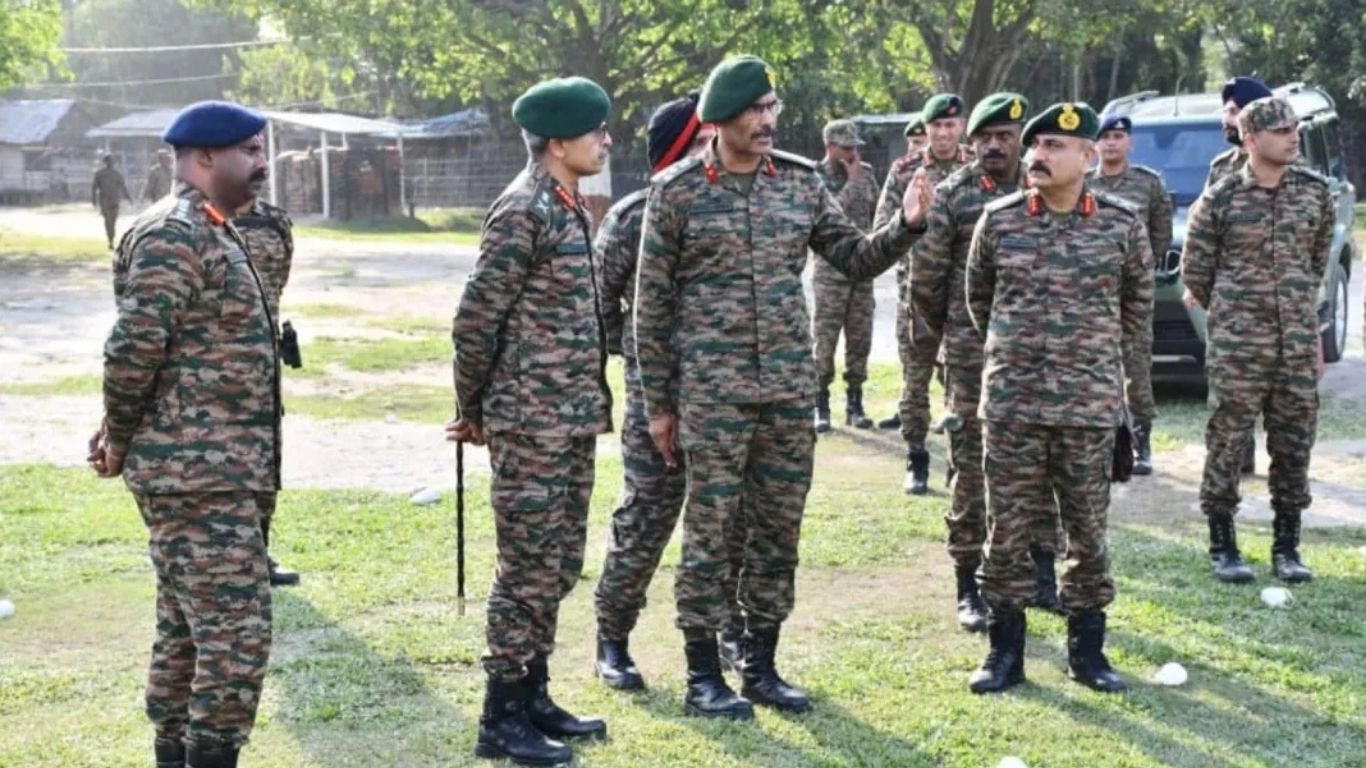Explainer
India’s rising military strength near Chicken’s Neck: What’s behind it?
Daily Sun Report, Dhaka
Published: 11h ago

Indian Lt Gen RC Tiwari visited an Army camp in Chopra, North Dinajpur, West Bengal. Photo: X
India has intensified military activities in the strategically vital Chicken’s Neck, also known as the Siliguri Corridor, located near Bangladesh’s northern border.
Recent reports suggest that India is setting up two new army stations in Assam and Uttar Dinajpur, prompting extensive analysis among security experts in both countries.
Security analysts believe the primary motive behind India’s military build-up is to reinforce the protection of the corridor.
The Chicken’s Neck is a narrow stretch connecting India’s mainland to its seven northeastern states, often referred to as the ‘Seven Sisters’. With borders adjoining several countries, including China and Bangladesh, the area is highly sensitive in terms of regional security and India’s territorial integrity.
Amid the heightened military presence, rumours surfaced on social media alleging that 62 km of land in Lalmonirhat has been taken over by India. However, locals have dismissed the claims as baseless. Residents near the border report that the Border Security Force (BSF) has significantly increased patrols and erected additional outposts, especially since 5 August. Despite the vigilance, residents have not noticed any encroachment or troop intrusion.
On 11 November, three Bangladeshis were reportedly injured when the BSF opened fire after an attempt to cross the border. Meanwhile, India’s strategic preparations extend beyond the border patrols. Earlier this year, Indian armed forces conducted a large-scale joint military drill in the Siliguri Corridor.
The two new army bases, located in Dhubri (Assam) and Chopra (Uttar Dinajpur), are very close to the Bangladeshi border.
Major General (retd) Dipankar Banerjee of India said this is part of a larger capacity-building plan aimed at securing the corridor, especially in light of Chinese activities in the region, including the Doklam standoff.
Although some speculate that Bangladesh’s recent political changes may have prompted India’s increased military posture, Banerjee refutes this, arguing that the developments are primarily security-driven and pre-emptive, particularly due to long-standing concerns over illegal cross-border movements.
Bangladesh Border Guard (BGB) officials say they have seen no unusual military mobilisation that could raise alarms. BGB Commander Lt Col Mehedi Imam noted that India is free to set up bases within its territory as long as they do not violate Bangladesh’s sovereignty.
Former Bangladesh Army Major General Md Nayeem Ashfaq Chowdhury, however, points out the timing and placement of the Indian military infrastructure as significant. He cites three key concerns: securing the Siliguri Corridor, managing Chinese expansion, and reacting to perceived geopolitical shifts following political changes in Bangladesh.
Chowdhury describes India’s move as a “grey-zone battle”, wherein indirect military pressure is applied to influence strategic decisions. He advises that Bangladesh must proceed cautiously, maintaining military diplomacy and cooperation.
Although India does not consider Bangladesh a military threat, its concerns lie in the possibility of its eastern front being leveraged by other powers, particularly China, which is involved in projects such as the Teesta River scheme and has shown increased presence near Lalmonirhat.
Source: BBC Bangla

